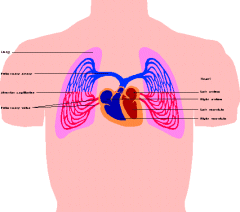|
Intermittent Positive Pressure Breathing (IPPB) |
IPPB (Intermittent positive pressure breathing pressure) therapy is defined as the therapeutic application, usually via a mask or mouthpiece, of inspiratory positive pressure to the airway of a spontaneously breathing patient on an intermittent or short-term basis by an trained respiratory care practitioner (RCP). On an intermittent basis, IPPB treatments usually last 15 to 20 minutes, and may be given several times each day. Short-term use is for purposes of assisting ventilation, and may be provided over a period of several hours, such as overnight.
 |
Overview |
The use of IPPB therapy has been controversial for more than three decades. It came under attack as both an unvalidated and overused treatment modality. The Respiratory Care Committee of the American Thoracic Society (ATS), in 1980, prepared guidelines for limiting the use of IPPB certain clearly defined clinical situations. Later in the 1980s, the American Association for Respiratory Care (AARC) issued a statement asserting that the effectiveness of IPPB was actually limited to several, very specific clinical situations. Eventually, the AARC established clear clinical practice guidelines for the use of IPPB therapy.
Clearly, IPPB should neither be totally condemned nor universally applied. Critics demanding specific physiologic evidence supporting the qualitative and quantitative benefits of IPPB need to be reminded that standardization of administration is necessary for legitimate studies of the efficacy of treatment regimens. This kind of standardization is difficult when mechanical or manipulative regimens like IPPB are being studied.
On the other hand, supporters of IPPB's effectiveness need to recall that unsubstantiated clinical impression and dogma are not the same as irrefutable clinical evidence. Like so many other respiratory care modalities, the effectiveness of IPPB requires that:
- patients be carefully selected
- the indications for therapy be specifically defined
- the goals of therapy be clearly understood
- the treatment be properly administered by a trained RCP
The key to being able to accurately assess a treatment modality's efficacy is to evaluate how well it accomplishes its goals, and to review the goals of IPPB it is necessary to first understand the physiological basis and impact of IPPB.